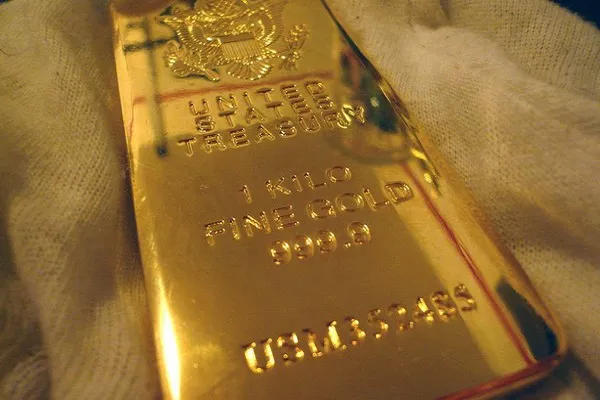The gold-silver ratio is a critical metric for investors and analysts in the precious metals market, offering insights into the relative value of gold and silver. This ratio, calculated by dividing the current price of gold by the current price of silver, serves as a barometer for market sentiment, economic conditions, and potential investment opportunities. Understanding its significance can help investors make informed decisions, manage risks, and capitalize on market fluctuations.
Understanding the Gold-Silver Ratio
The gold-silver ratio has a long history, dating back thousands of years when these metals were used as currency and stores of value. Traditionally, gold has been viewed as a more stable investment compared to silver, which often experiences higher volatility due to its industrial applications and supply dynamics. The ratio provides a simplified way to gauge the relative performance of these two precious metals.
Calculation of the Ratio
The formula for calculating the gold-silver ratio is straightforward:
Gold-Silver Ratio= Price of Gold/Price of Silver
For example, if gold is priced at $1,800 per ounce and silver at $24 per ounce, the gold-silver ratio would be 75 (i.e., $1,800 ÷ $24).
Historical Context
Historically, the gold-silver ratio has varied significantly. Over the last century, the ratio has seen extremes, ranging from 15:1 during periods of silver abundance to over 100:1 during times of economic uncertainty. Tracking historical trends can provide insights into potential price movements and investment strategies.
Why the Gold-Silver Ratio Matters
1. Market Sentiment and Economic Indicators
The gold-silver ratio often reflects broader economic conditions and market sentiment. In times of economic uncertainty, investors tend to flock to gold as a safe haven, leading to an increase in its price relative to silver. Conversely, when the economy is stable or growing, industrial demand for silver may push its price up more rapidly, affecting the ratio.
2. Investment Strategy
Investors use the gold-silver ratio to make informed investment decisions. For example, a high ratio may suggest that silver is undervalued relative to gold, presenting a buying opportunity for silver. Conversely, a low ratio might indicate that silver is overvalued, prompting investors to consider selling or reallocating their assets.
3. Diversification and Risk Management
Investing in both gold and silver can provide a diversified portfolio, helping to mitigate risk. The gold-silver ratio serves as a guide for rebalancing portfolios. By understanding the current ratio and its historical context, investors can adjust their allocations between gold and silver based on market conditions.
4. Hedging Against Inflation
Both gold and silver are seen as hedges against inflation. When inflation rises, the purchasing power of fiat currencies decreases, prompting investors to seek refuge in tangible assets like gold and silver. The gold-silver ratio can help gauge inflation expectations, influencing decisions regarding asset allocation in times of rising prices.
Technical Analysis of the Gold-Silver Ratio
Traders and analysts often utilize the gold-silver ratio in technical analysis. Charting the ratio over time can reveal patterns, trends, and potential reversal points, offering insights into future price movements. Key levels of support and resistance may emerge, allowing traders to identify entry and exit points in their trading strategies.
1. Bullish and Bearish Signals
A rising gold-silver ratio can signal bearish conditions for silver, indicating that it may underperform relative to gold. Conversely, a declining ratio can be interpreted as bullish for silver, suggesting that it may outperform gold. Traders can use these signals to position their trades accordingly.
2. Correlation with Other Markets
The gold-silver ratio can also be analyzed in conjunction with other markets, such as equities and commodities. For instance, a rising ratio alongside declining stock prices may reinforce the idea that investors are seeking safety in precious metals. Understanding these correlations can enhance market timing and trading strategies.
Limitations of the Gold-Silver Ratio
While the gold-silver ratio is a valuable tool, it is essential to recognize its limitations. Market conditions can change rapidly, and external factors such as geopolitical events, central bank policies, and changes in industrial demand for silver can impact prices independently of historical trends. Therefore, investors should use the ratio in conjunction with other analyses and indicators.
1. Short-term Volatility
Silver, due to its industrial applications, often experiences more significant short-term price fluctuations than gold. This volatility can lead to rapid changes in the gold-silver ratio, making it essential for investors to consider longer-term trends rather than short-term noise.
2. Supply and Demand Dynamics
Both gold and silver have unique supply and demand dynamics. Silver’s industrial demand, particularly in technology and renewable energy, can drive prices independently of gold. As such, while the ratio provides useful insights, it should not be the sole factor in investment decisions.
See Also How Much is 1 Gram of Gold?
Conclusion
The gold-silver ratio is an essential tool for investors in the precious metals market, providing insights into relative value, market sentiment, and potential investment opportunities. By understanding its significance and historical context, investors can make informed decisions, enhance their portfolio diversification, and manage risk effectively. While the ratio has limitations, when used alongside other analyses and market indicators, it can serve as a valuable guide in navigating the complex landscape of precious metals investing. As always, careful consideration of market conditions and a well-rounded investment strategy will yield the best results for those looking to invest in gold and silver.


